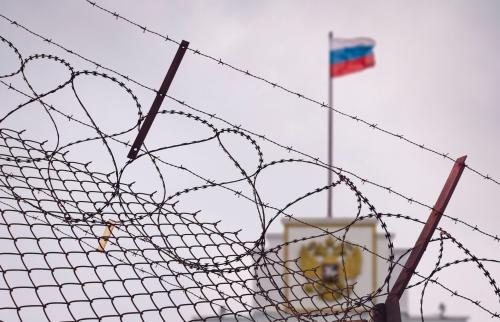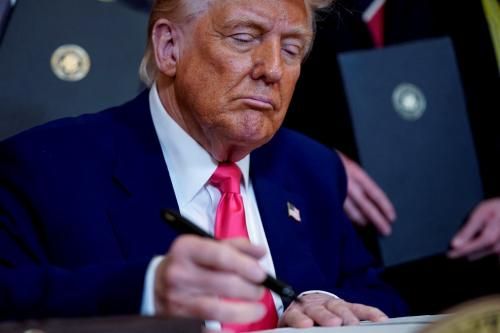For months, pundits and policymakers in North American and European capitals have put pressure on countries in Central and Eastern Europe to abandon their support for South Stream, a major gas pipeline planned to run from Russia to Europe. From a Russian point of view, South Stream was the final piece in a decade-long tug-of-war with unreliable transit state Ukraine, which repeatedly blackmailed both Russia and its European clientele. In order to reduce these transit risks, Gazprom invested billions to construct the Yamal pipeline through Belarus and Poland, and most recently built the Nord Stream pipeline through the Baltic Sea, straight to Germany.
South Stream would have brought a maximum capacity of 63 billion cubic meters (bcm) of natural gas across the Black Sea, into Bulgaria, and then the pipeline would have split, supplying the Balkans and Austria, with the other branch eventually supplying northern Italy. On December 1, amidst western sanctions and continued anti-Russian rhetoric in Europe, Russian President Vladimir Putin, while on a visit to Turkey, announced that South Stream would not be built. Notwithstanding some back peddling by European politicians, on December 9, Gazprom confirmed that the decision to abandon the project was final. Whether that is actually the case remains to be seen, and in the long-term, a Turkish route to supply southern Europe may well emerge.
Regardless of the final outcome, what does this decision tell us?
First, we have to establish that this move is unlikely to have direct repercussions in terms of available gas supplies in Europe. South Stream was only going to become operational in late 2015, and that was probably an optimistic date. Moreover, it has long, and rightly, been debated as to what extent Gazprom truly needed this pipeline to supply its European customers. The Russian argument has always been that by bypassing Ukraine, the company could honor its existing contracts in European markets. Similarly, Gazprom has invested in gas storage facilities in Italy, so that in the event of a supply disruption it could still honor its contractual agreements. In fact, Gazprom currently owns the largest share of gas storage facilities in the EU. However, there were also concerns that by constructing South Stream, Gazprom would lock-in some of its customers, particularly in Central and Eastern Europe, and that after completion these customers would be easy victims to market power abuse and arbitrary pricing.
Second, it confirms that President Putin continues to surprise most observers and policymakers. As my colleague Fiona Hill explains, Putin cleverly made a sacrifice by ending a project that had become politically and financially too expensive. In my view, by abandoning this project, Putin has sent a message that he has had enough of Europe’s continued complaints and critiques about its role in Ukraine, an issue that both sides continue to be divided over. With these actions, Putin is attempting to stay ahead of his adversaries, though his country is increasingly being backed into a tough corner, fuelled partly by economic sanctions, but overwhelmingly by tanking oil prices, the devaluation of its currency and skyrocketing interest rates.
Third, in less than two weeks, governments in European and North American countries have received two fresh pieces of evidence that Russia’s oft asserted isolation is a farce. In May of this year, China made clear that it had no problem doing business with Russia despite it being a pariah, as the two countries concluded negotiations to construct a 38 bcm gas pipeline from Russia to China. These negotiations had lasted over a decade and are part of Russia’s long-standing desire to diversify its markets; the situation in Ukraine and the geopolitical fall-out created a context in which China and Russia could consummate the deal. Then, in early December, President Putin visited Turkey, where he announced the cancellation of South Stream and instead proposed a reinforcement of existing energy relations with Turkey. Many uncertainties remain as to what form, route or volume this reinforcement will take. Nevertheless, assuming Turkey realizes its ambitions to develop a gas trading hub, and assuming the Trans Adriatic Pipeline from Turkey to southern Europe is eventually built, this agreement may turn out to be an alternative supply route for Russian gas to Europe.
Only days later, President Putin travelled to India where he concluded a series of trade agreements, as my colleague Tanvi Madan describes. Russia has major disagreements with all of the aforementioned countries in other areas, and there is surely mutual suspicion and historical baggage, but that has not gotten in the way of conducting trade. Though arguably none of these agreements have been ironed out and many obstacles remain, the overarching message is the same: pragmatism over idealism. In China, there are certainly concerns about increased gas trade with Russia, but concerns over air quality require the authorities to attract more natural gas to replace coal, and several years of successful oil deliveries (in 2013, about 30 percent of Russian oil was exported to Asia) have created some confidence in China. Whether relations are extended beyond resources is uncertain at this point.
Virtually all the anticipated growth in energy consumption in the coming decades is expected to take place in non-OECD countries and rising economies like Turkey. It thus makes sense that Russia is looking at some of these countries as increasingly important trading partners, while at the same time making clear that western sanctions have not isolated it. Earlier this year, a wide range of countries abstained from voting on the U.N. resolution that condemned the annexation of Crimea. Among these countries were China, India, Argentina, Brazil, South Africa, Egypt and others. Together these countries represent over 60 percent of the world’s population and have governments which are increasingly dissatisfied with existing institutions and power configurations. At the same time, their economic clout is increasing.
From a European point of view, the cancellation of South Stream cannot be a reason for celebration. Negative short-term consequences of the decision are unlikely at this point, as Gazprom does not have reasonable alternative markets in which to sell its hydrocarbons. That is likely going to change though in the coming years, even though it will take considerable time before gas trade with countries like China and Turkey can begin or be expanded, and later maybe with India, Korea, and Japan, as each will need infrastructure to materialize, financial arrangements set in stone, and new supplies developed. Regardless, it is unclear how it can be in Europe’s interest that relations with its major trade partner, largest external energy supplier and neighbor, have turned as sour as they currently have. The European Commission currently focuses on increasing gas supplies through the Turkish route, albeit with gas originating in Azerbaijan, Turkmenistan, Kurdistan or, one day, Iran. That is fine, though it is important to keep in mind that all these alternatives have their own obstacles to overcome, and the contribution of the alternatives to Russian natural gas should not be overestimated, as we concluded in an earlier study. Moreover, if Russia and Turkey increase their gas trade, and Turkey realizes its ambition to become a gas hub (Turkey has explicitly said it is not interested in becoming a transit state), then Russian gas may just enter that cocktail before it reaches Europe, assuming that the EU is able to maintain a normal working relationship with President Recep Tayyip Erdoğan. Thus, the cancellation of South Stream is a Pyrrhic victory at best. Europe struggles to get an energy policy in place, to complete its internal gas market and to make natural gas more competitive to start with, as its emissions trading scheme requires drastic reforms. It is heavily divided over nuclear energy, shale gas, renewables and the future use of coal, and who pays what for critical energy infrastructure. In that context of broad European energy challenges, one would think that European policy makers would have more important issues to deal with than quarreling about a pipeline.
The Brookings Institution is committed to quality, independence, and impact.
We are supported by a diverse array of funders. In line with our values and policies, each Brookings publication represents the sole views of its author(s).



Commentary
The Cancellation of South Stream is a Pyrrhic Victory, At Best
December 18, 2014